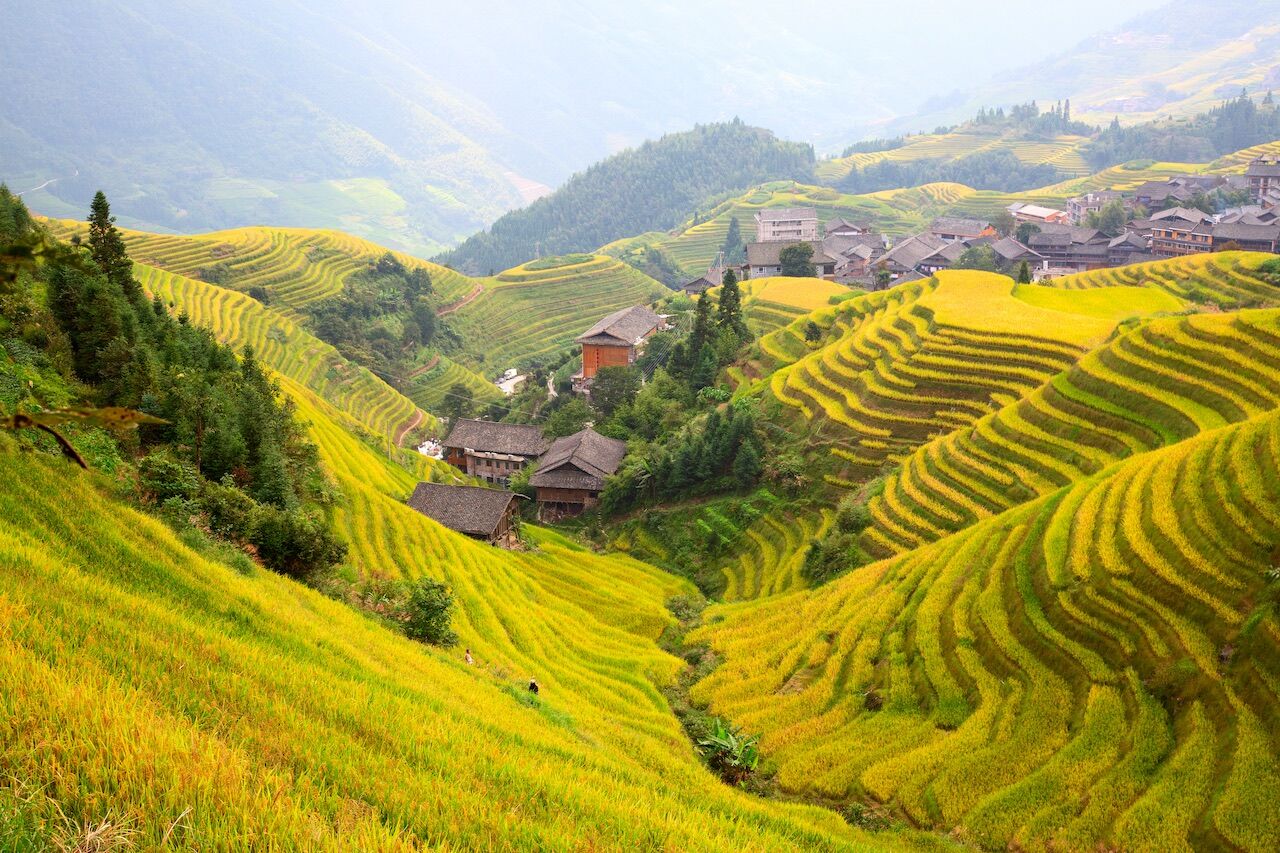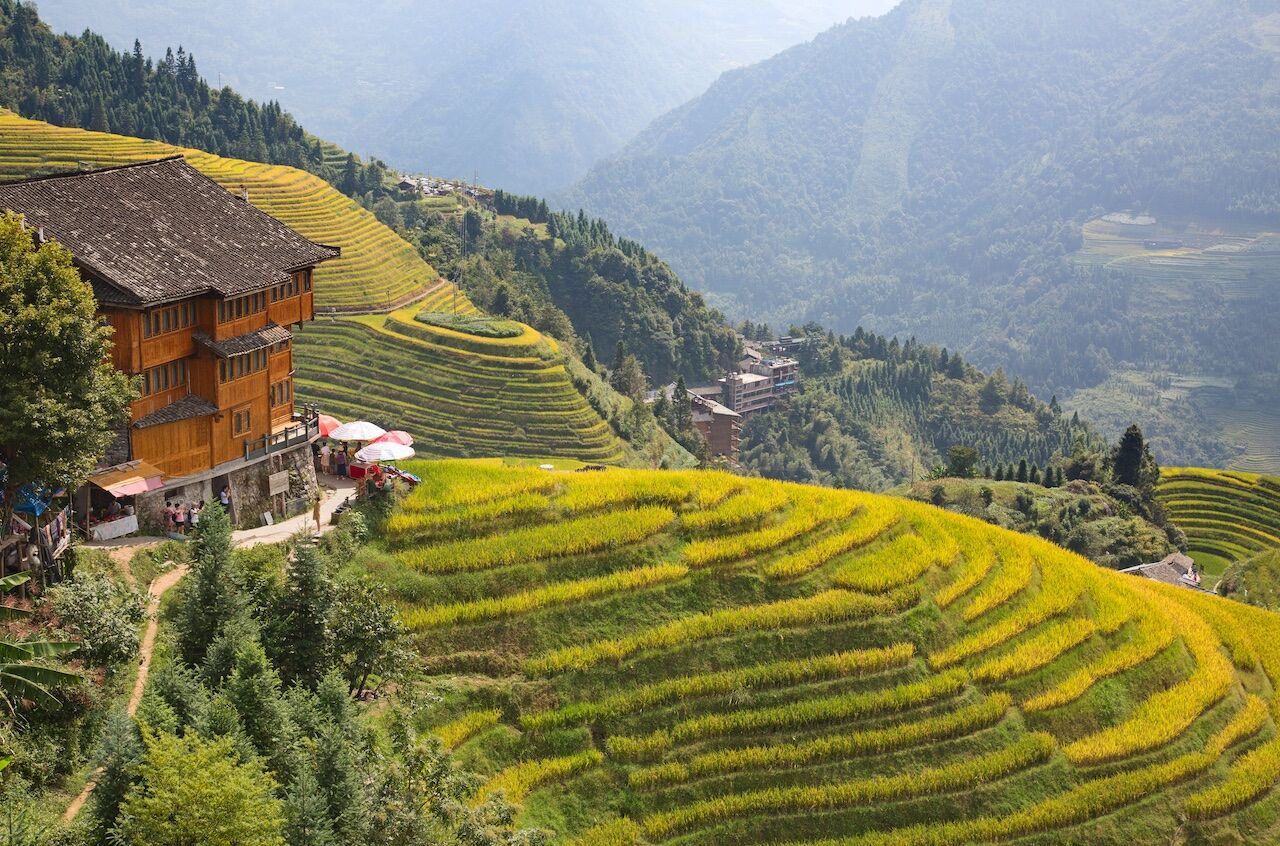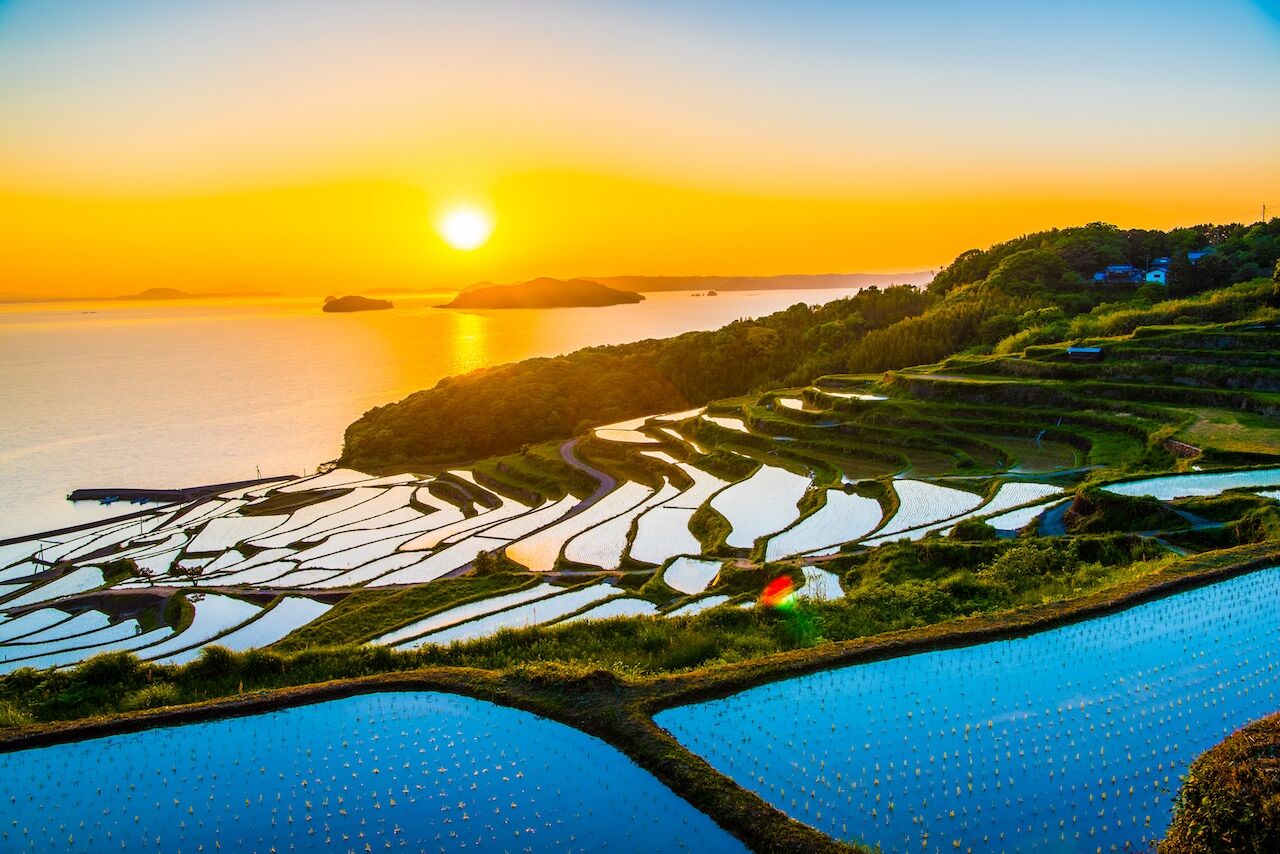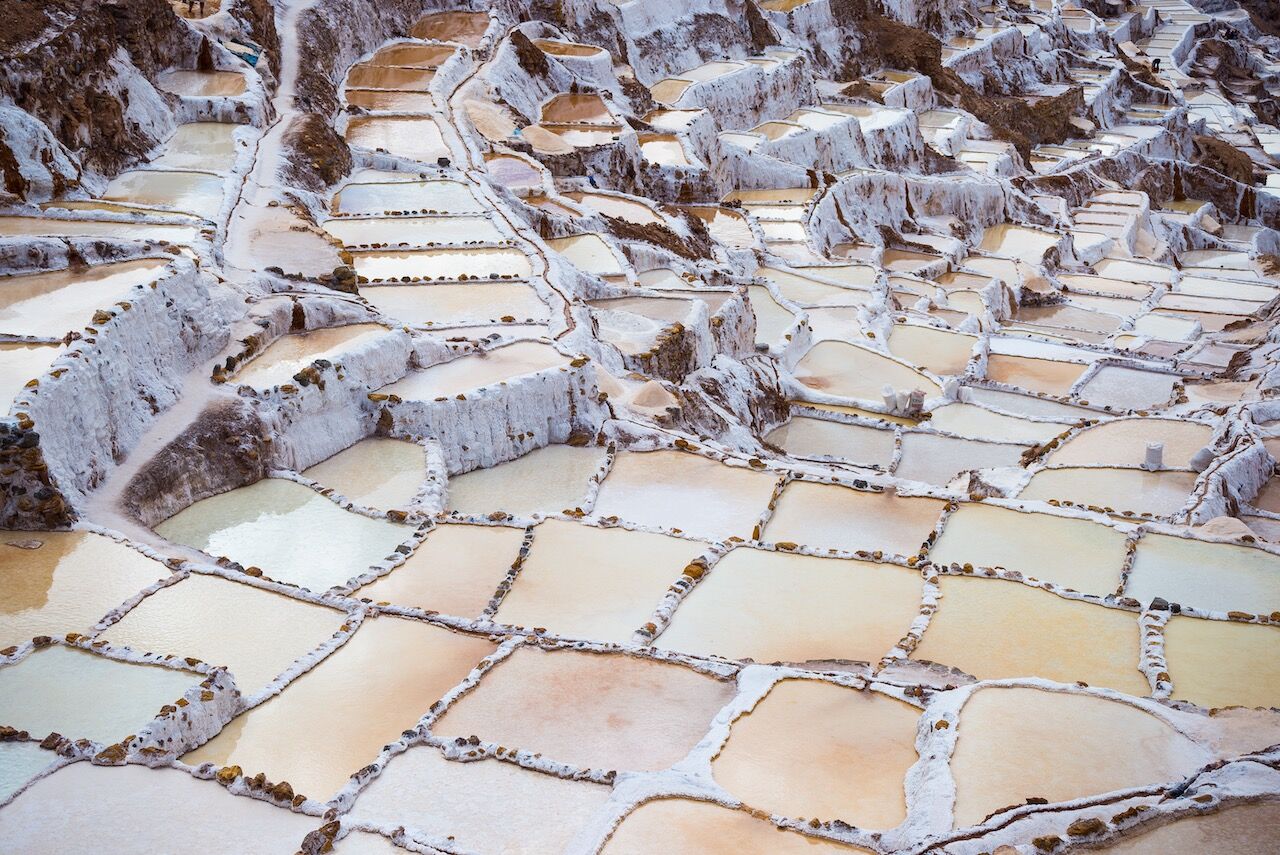AS THE TECHNOLOGY OF AGRICULTURE spread around the world c. 10,000 years ago, it was probably pretty simple to adopt in areas of flat land. For people living in mountains or hilly terrain, on the other hand, certain adaptations were necessary.


19 Spectacular Examples of Terraced Agriculture
Terracing is a type of landscaping whereby a natural slope is transformed into a stair-step of successively receding flat surfaces. This gives farmers multiple sections of arable land that: a) are more comfortable to work on, b) can be irrigated without excessive runoff, and c) are less susceptible to erosion.
Terracing has been utilized in the production of various crops in different parts of the world for thousands of years. In South and East Asia, terraces predominantly serve as rice paddies. In the Mediterranean, grape vines and olive and other agricultural trees are grown. And in the Andes, terraced slopes are planted with potatoes, maize, and quinoa. But beyond their primary function as agricultural tool, terraces possess an aesthetic that immediately draws your eye, especially when viewed from the proper vantage point as in the photos below.
1. Yuanyang, Yunnan, China

Photo: M. Scheja/Shutterstock
There are two well-known rice-terrace regions in southern China. Located in Yuanyang county, Yunnan province, this is one of them. The bright colors here are the result of algae growing on the surface of standing water on some of the terraces.
2. Himalaya, Nepal

Photo: Matteo Bedendo/Shutterstock
Terraces like this often make up the scenery when trekking in Nepal.
3. Longsheng, Guangxi, China

Photo: Fedor Selivanov/Shutterstock
The second of southern China’s famous rice-terrace regions. Two terraces in particular account for most of the photos from Longsheng that appear in this list: Ping An Rice Terrace and Jinkeng Rice Terrace.
4. Moray, Peru

Photo: Tetyana Dotsenko/Shutterstock
30 miles from Cusco, Moray is an Incan archaeological site and is thought to have served as an open-air laboratory for testing the effects of different elevations and irrigation schemes on the cultivation of crops.
5. Yuanyang, Yunnan, China

Photo: Dorason/Shutterstock
This area of Yuanyang, dominated by the Ailao Mountains, is inhabited by the Hani ethnic minority, who have been practicing terracing here for at least 1,300 years.
6. Longsheng, Guangxi, China

Photo: Fedor Selivanov/Shutterstock
Many of the Longsheng terraces are around 500 years old, dating to the Ming Dynasty. They climb up from the floor of the river valley at 380m elevation to a height of about 880m.
7. Madeira, Portugal

Photo: Rad Radu/Shutterstock
With land area limited in this remote Atlantic archipelago, terracing is a necessity.
8. Banaue, Philippines

Photo: RZL GatCo/Shutterstock
The Batad Rice Terraces, located in the municipality of Banaue in central Luzon, have been named a UNESCO World Heritage Site.
9. Yuanyang, Yunnan, China

Photo: Jixin YU/Shutterstock
At elevations nearing 2,000m, most of Yuanyang’s rice terraces are in a climate zone cold enough to limit them to producing only one rice crop per year. Following the autumn harvest, water is pumped into the terraces and left standing until spring.
10. Pisaq, Peru

Photo: poolps27/Shutterstock
Located in the Sacred Valley of the Urubamba River, Pisaq was once an Inca fortress. The terraces here were created by hauling rich valley soil up the mountainsides, and they’re still used for agriculture today.
11. Longsheng, Guangxi, China

Photo: Fedor Selivanov/Shutterstock
In Longsheng, the Longji (“Dragon’s Backbone”) Rice Terraces were named after the distinctive curvature and rise of the mountain ridge, and the fact that the terraces give the land a scale-like appearance.
12. Ubud, Bali, Indonesia

Photo: Elena Ermakova/Shutterstock
The interior city of Ubud pulls in tourists from the beaches with attractions like yoga retreats, mountain treks, and stacked infinity pools.
13. Banaue, Philippines

Photo: R.M. Nunes/Shutterstock
The Filipino province of Ifugao is home to all five rice-terrace sites included in the UNESCO World Heritage ranking. The town of Banaue contains two: Batad and Bangaan.
14. Sapa, Vietnam

Photo: JunPhoto/Shutterstock
The Hoang Lien Son Mountains of northwestern Vietnam are home to many ethnic minority groups, traditionally isolated from the lowland Vietnamese.
15. Longsheng, Guangxi, China

Photo: SL-Photography/Shutterstock
From Wikipedia: “[The terraces] are often considered most beautiful in early June. At this time, water is pumped over the rice paddies and young plants are transferred to the main terraces.”
16. Saga, Japan

Photo: T-Mizuguchi/Shutterstock
The prefecture of Saga, in northwestern Kyushu, counts 39% of its land area as arable, some of which includes seaside rice terraces like those pictured above.
17. Maras, Peru

Photo: Fabio Lamanna/Shutterstock
In Maras, in the Sacred Valley, terraces are put to a different use. Since before the time of the Inca, these artificial ponds have been used to collect and evaporate out water from a mineral-rich subterranean stream, leaving behind a valuable commodity: salt.
18. Yuanyang county, Yunnan, China

Photo: worawit2515/Shutterstock
Yuanyang terraces have become something of a tourist attraction, particularly for photographers, but the region as a whole remains largely unvisited by outsiders.
19. Dalat, Vietnam

Photo: Olesya Kuznetsova/Shutterstock
Located in southern Vietnam, Dalat’s 1,500m (4,900ft) elevation gives it a much more temperate climate than the surrounding lowlands. Consequently, different crops are grown here: cabbage, fruit, cauliflower, and decorative flowers, for example.